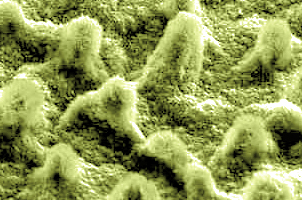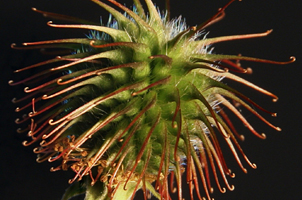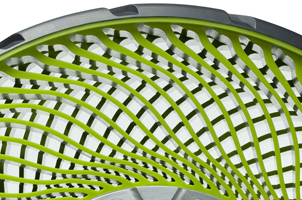Nature is constantly inspiring designers whether it be form, function or colour. Organic forms exist in both traditional and modern designs, but nature can also be an inspiration for advances in technology. Here are three technologies that we use in day to day life that you may or may not know have come from nature.
Nanotechnology advances in waterproofing (superhydrophobic coatings)The leaves of the lotus plant and wings of cicadas are self-cleaning because of the nano structure on their surfaces. Nano scale bumps allow water to sit on the surface as an almost perfect sphere. This means that water beads “glide” with very little surface friction. There have been many developments in waterproof coatings using the study of lotus leaves. A simple coating on fabrics, plastics or metals create a surface that is anti-wetting, anti-icing, anti-corrosion, anti-bacterial and self-cleaning because of its ability to “repel” water. Imagine never having to clean your clothes, mud would just slip off your gumboots, you could talk on your phone in the shower. The possibilities are endless. VelcroVelcro can be found on many items that you use day to day. Shoes and clothing use this sticky material as fasteners, the hook and loop can be used as temporary picture hooks, it can even be found on spacesuits. But did you know that Velcro was inspired by the way plant burrs stick to dog hair? In 1941 George de Mestral, a Swiss engineer, inspected burrs under a microscope and found hundreds of miniscule hooks that could catch on loops of hair or clothing. He developed a material which he called Velcro, from the French words "velours," meaning velvet, and "crochet," meaning hook. Velcro can be used in many product design applications. It is especially useful in prototyping when a cover is needed to be removed easily for development. It is a simple fastener used to join fabrics, plastics, metals and more. Honeycomb structure/bone structureHoneycomb structure is an effective way to minimise weight while maintaining strength. The first honeycomb structures were used for beekeeping in the 1890s, imitating the natural structure of honeybee combs. It was later developed for aircraft application in 1915. The geometry of the honeycomb can vary but are usually hexagonal or columnal. Layering the honeycomb structure between two “skins” forms a plate-like assembly commonly used in the aerospace, furniture and packaging industries. Even products like skis and snowboards use a honeycomb type structure to take advantage of the high strength-to-weight ratio. Foam core materials have a similar geometry and are quite similar to the structure of bone. The “foam” interior is very easy to crush and does not have strong compressive properties on its own. However, when layered between “skins” the material becomes very strong. The foam core technology was explored recently when Bayly worked with Relaxed Australia in the development of the Sylvan Caravan. The caravan “shells” are built using fibreglass skins with a foam core. The ability to create a strong yet lightweight van is very desirable. Petrol usage can be reduced significantly and because of the trapped air within the core of the shells, the van was inherently insulated. This step away from traditional caravan construction also allowed greater freedom in the styling of the van. The construction of each “shell” is able to be done quickly and independently and assembled like a puzzle at a later stage. Check out the Sylvan caravan here. Or here. |
|
|




